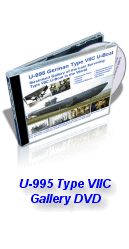

|
T IIIa FaT II (G7e) Pattern Running Torpedo
 |
 |
 |
 |
The new pattern running T IIIa FaT II torpedo entered service at the end of 1942. Essentially the same as other conventional torpedoes, the only difference lay in the guidance system.
Designed as a specialized anti convoy weapon, it was intended to be launched from abeam a convoy. The torpedo could be programmed to run in a straight line for a certain distance, then if a hit did not occur, the torpedo would reverse course turning right or left (as programmed) and ran for a further 800 or 1,600 meters before reversing course again. This zigzag search pattern would continue until the torpedo found a target or ran out of fuel. If this zigzag pattern ran across the path of a convoy, chances of scoring a hit was greatly increased.
As the torpedo could not differentiate between friendly and hostile targets, U-boats launching FATs had to radio a warning to nearby U-boats to stay clear for at least half an hour. As far as is known, however, no such sinkings took place.
The pattern running guidance system was also fitted to the steam-powered T I. Designated as T I FaT I (G7a), this version was not widely adapted due to the bubble wake. Another slight variation was also adapted, which came to be known as T III FaT II (G7e). This was launched from the stern tube against attacking pursuers, where after the initial straight run, the torpedo would turn back full circle in a long loop. This was not successful, however, and was quickly discontinued.
FaT = Federapparat Torpedo; Spring Apparatus Torpedo
Range/Speed: 7,315m at 30kt;
Warhead: 280kg



